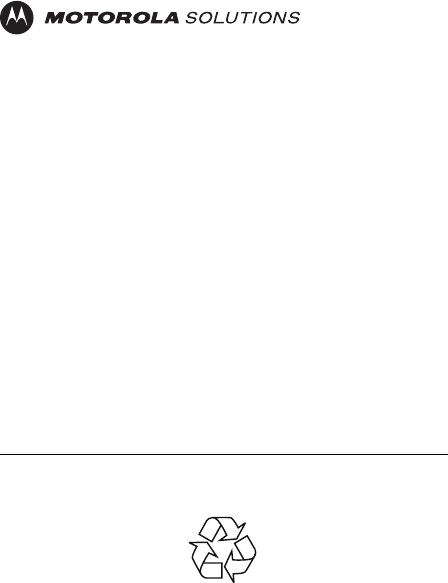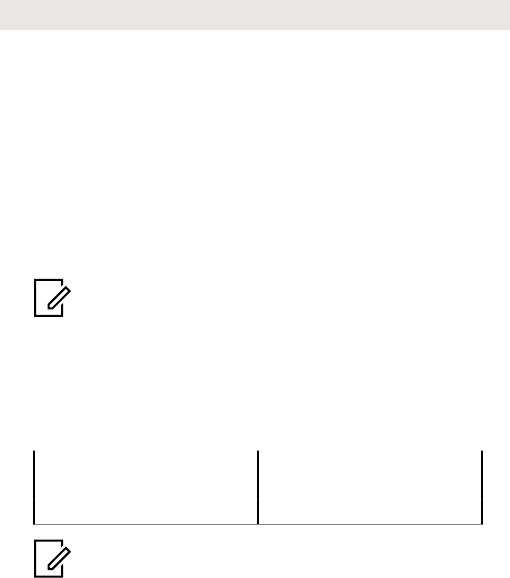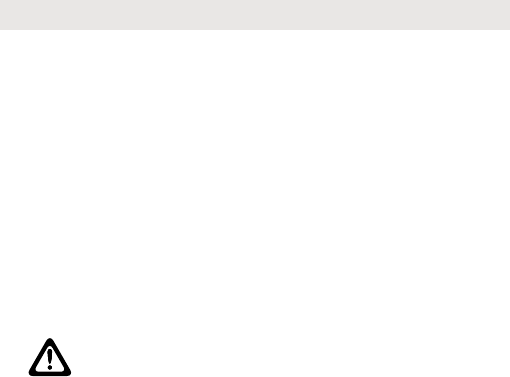Motorola Solutions 92FT7114 MC-EDGE UHF Range 2, Edge Sensor Gateway User Manual RF Safety Manual
Motorola Solutions, Inc. MC-EDGE UHF Range 2, Edge Sensor Gateway RF Safety Manual
Contents
- 1. Manual
- 2. RF Safety Manual
RF Safety Manual

RF Energy Exposure Training and
Product Safety Information for Fixed
Radio Transmitters
July 2018
© 2018 Motorola Solutions, Inc. All rights reserved
6802988C84
6802988C84-B
Motorola Solutions

Caution
Before using this radio transmitter, read this booklet which contains important
operating instructions.
Compliance with RF Exposure Standards
National and international regulations require compliance with the RF energy
exposure limits for fixed radio transmitters before they can be operated. Your
Motorola radio transmitter is designed, manufactured and tested to comply with all
applicable national and international regulations for human exposure to radio
frequency electromagnetic energy.
RF Energy Exposure Awareness and Control Information and
Operational Instructions
Notice: This radio transmitter is intended for use in occupational/
controlled conditions, where users are aware of their exposure and can
exercise control over their exposure to meet the requirements in national
and international regulations. This radio device is also authorized for
general population, consumer use.
Operating Instructions
Table 1 lists the recommended lateral distance from properly installed antenna(s).
Table 1: Recommended Minimum Lateral Distance from Antenna(s)
People (bystander) Minimum Lateral Distance
General Public 43.3 inches (110 centimeters)
Trained Personnel 43.3 inches (110 centimeters)
Notice: Trained personnel should be aware of the radio-frequency energy
exposure, and should be able to control it, for instance by increasing the
distance from the antenna(s).
Fixed Radio Transmitter Antenna Installation Guidelines
• Make sure to follow the antenna installation guidelines that are provided in this
radio transmitter installation manual.
• Use only Motorola Solutions approved supplied antennas or a Motorola Solutions
approved replacement antenna. Unauthorized antennas, modifications, or
English
1

attachments could damage the radio and may result in non-compliance with RF
safety standards.
Guidelines and Operating Instructions for Radio Transmitters
Installed as Fixed Site Control Stations
The antenna installation must comply with the following requirements in order to
ensure optimal performance and compliance with applicable RF exposure limits.
• The antenna should be mounted outside the building on the roof or a tower if at
all possible.
• It is the responsibility of the licensee to manage the site in accordance with
applicable regulatory requirements. Actions such as site survey measurements,
signage, and site access restrictions may be required in order to ensure
compliance with RF exposure limits.
Operational Warnings
The following explains the operational warnings:
Potentially Explosive Atmospheres
Warning:
• Use of a radio transmitter that is not intrinsically safe in a potentially
explosive atmosphere could result in a serious injury or death. You
should only use a certified Intrinsically Safe radio transmitter in
potentially explosive atmospheres.
• Explosive atmospheres refer to hazard classified locations that may
contain hazardous gas, vapors, dusts, such as fueling areas below
decks on boats, fuel or chemical transferor storage facilities, and areas
where the air contains chemicals or particles such as grain, dust or
metal powders. Areas with potentially explosive atmospheres are often,
but not always, posted.
• Make sure your radio transmitter is turned off prior to entering any area
with a potentially explosive atmosphere unless it is a transmitter type
specifically certified for use in hazardous location areas.
• DO NOT remove, install, or charge batteries in such areas, or remove
or install antennas. Sparks in a potentially explosive atmosphere can
cause an explosion or fire resulting in bodily injury or even death.
Batteries
If your radio transmitter is equipped with a primary or backup battery you must
follow these instructions:
• Charge your battery using the approved Motorola Solutions charger.
English
2

• Use the battery in accordance with its water and/or dust Ingress Protection (IP)
rating.
• Do not discard your battery into a fire.
• Do not replace the battery in any area labeled "Hazardous Atmosphere".
• Do not disassemble, crush, puncture, shred, or otherwise attempt to change the
form of your battery.
• Do not dry a wet or damp battery with an appliance or heat source, such as a
hair dryer or microwave oven.
• Do not allow conductive material such as jewelry, keys, or beaded chains to
touch exposed battery terminals.
European Union(EU) Waste of Electrical and Electronic Equipment
(WEEE) Directive
The European Union's WEEE directive requires that products sold into EU
countries must have the crossed out trash bin label on the product (or the package
in some cases). As defined by the WEEE directive, this cross-out trash bin label
means that customers and end-users in EU countries should not dispose of
electronic and electrical equipment or accessories in household waste. Customers
or end-users in EU countries should contact their local equipment supplier
representative or service centre for information about the waste collection system in
their country.
English
3